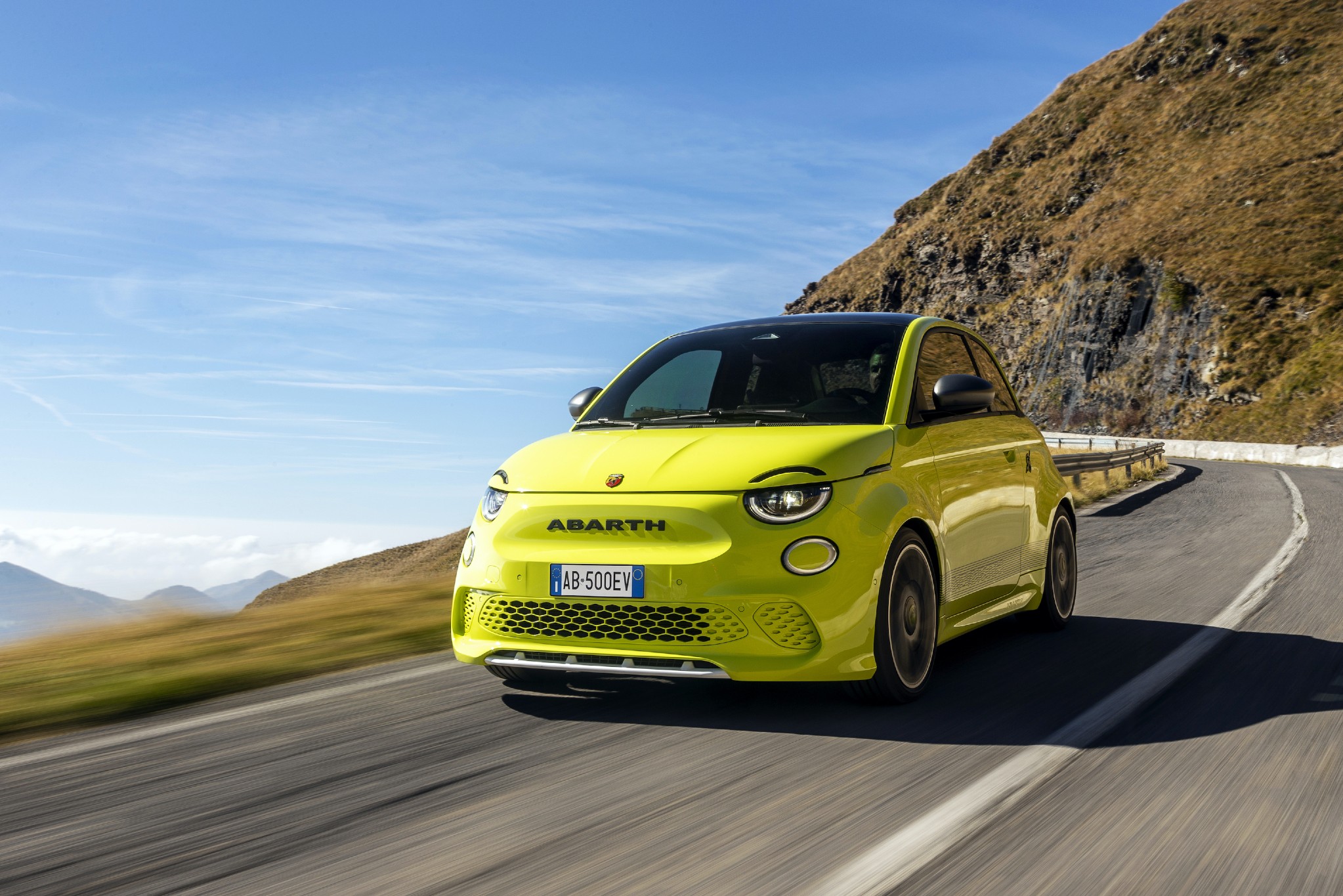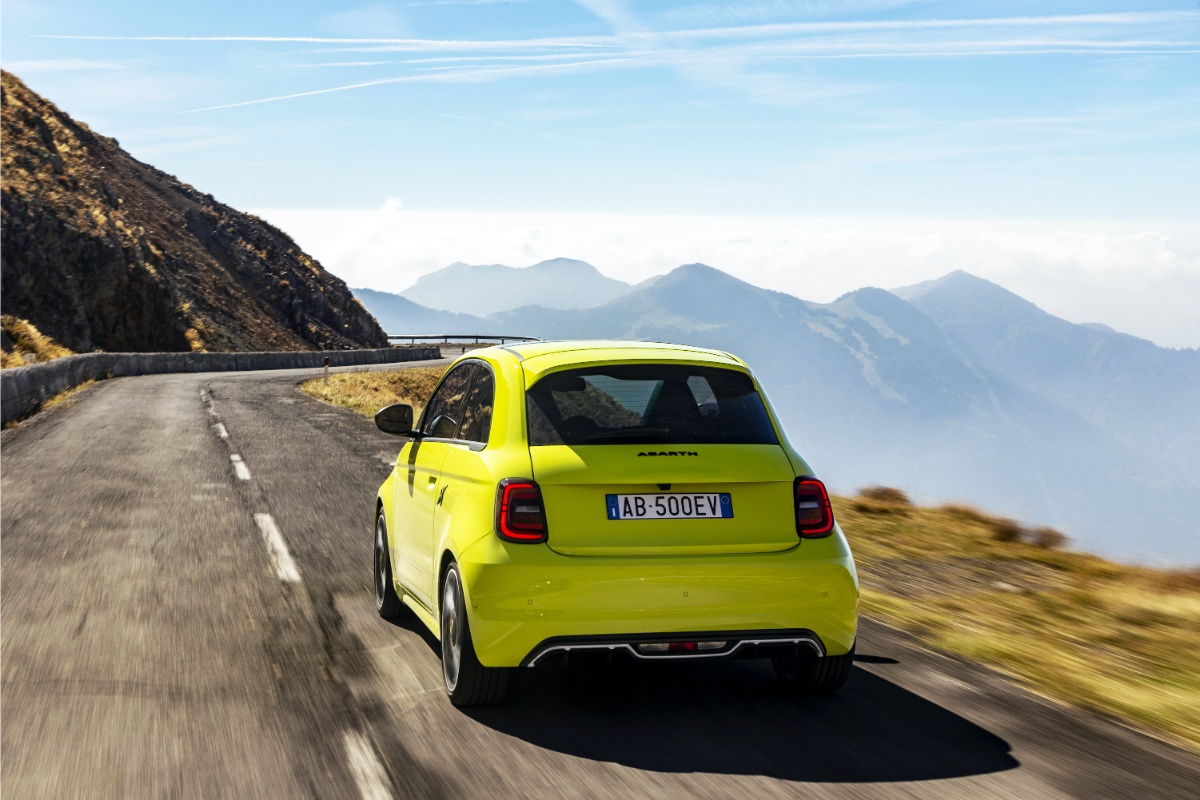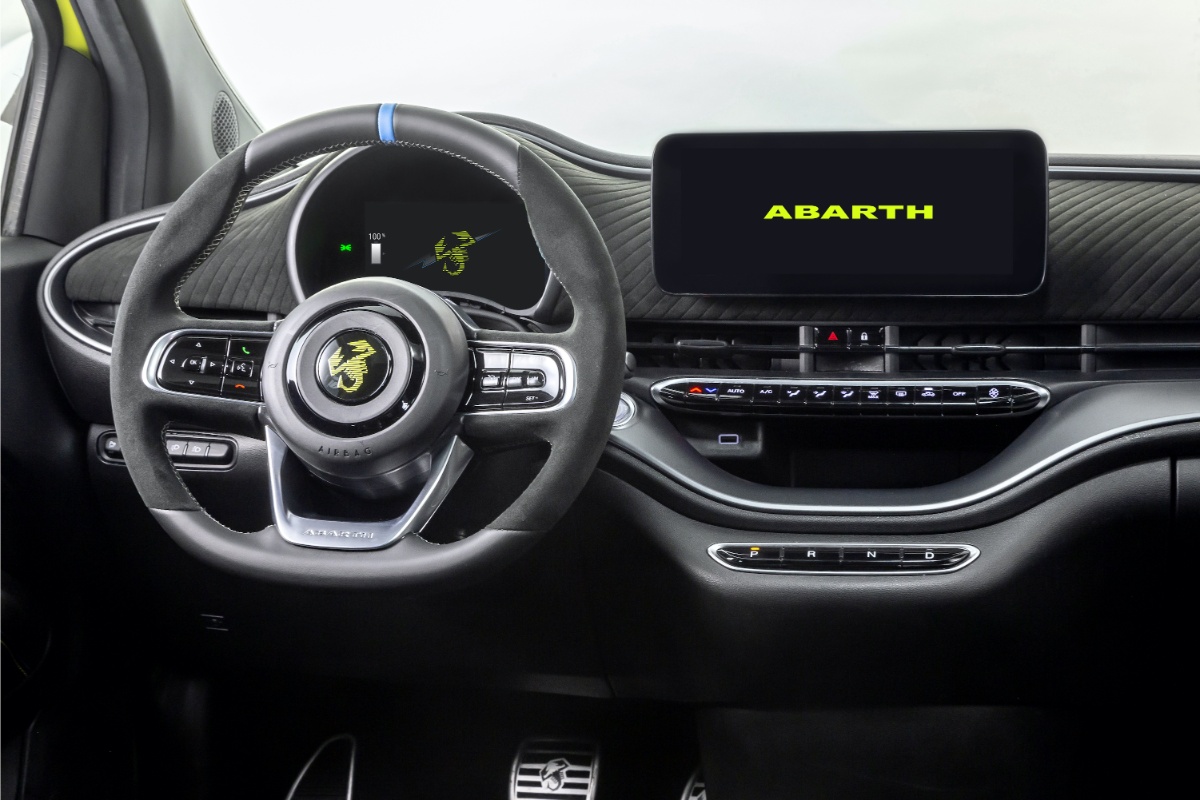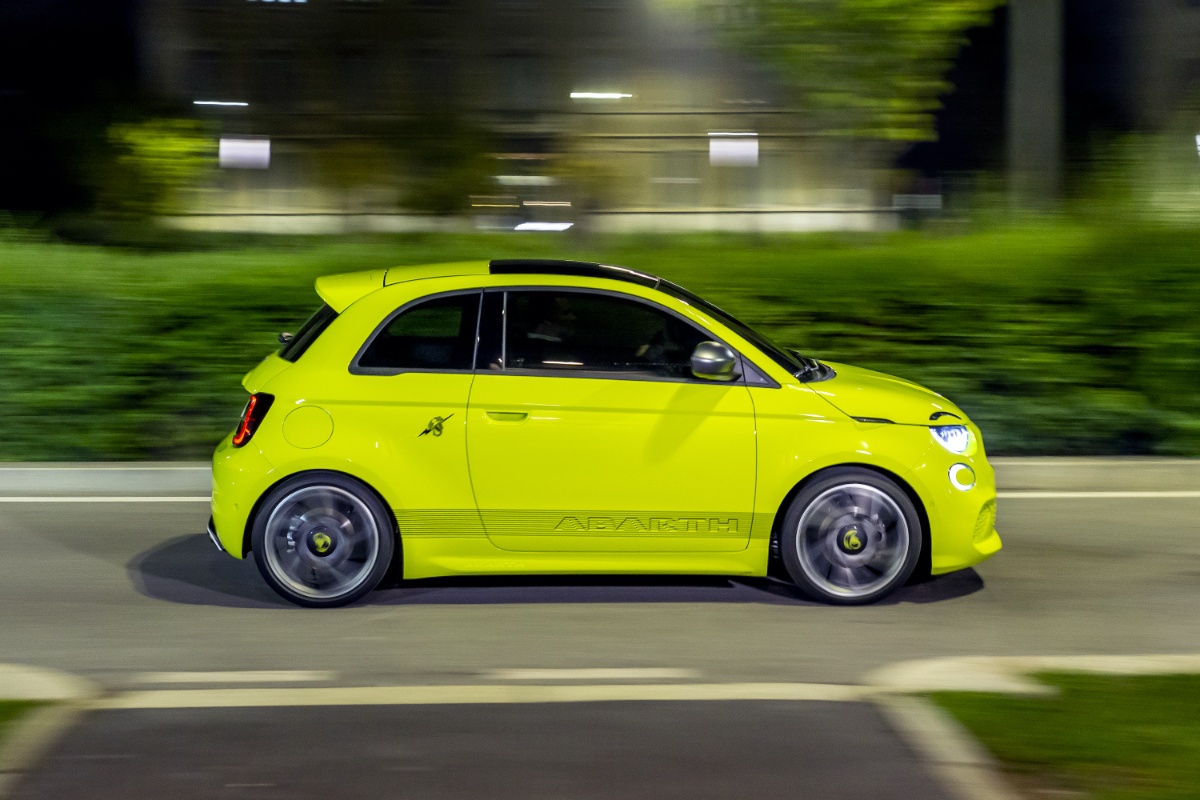Abarth 500e: Abarth enters the electric age
The Abarth 500e is possibly the most potent electric hot hatch anywhere in the world today
 The Abarth 500e is Abarth's first electric vehicle
The Abarth 500e is Abarth's first electric vehicleThis is the Abarth 500e, a warmed up version of the Fiat 500e that’s already proven to be extremely popular across Europe since its debut last year. If you’re a student of the petrol-powered Abarth 500, you won’t be surprised to hear that the same rules apply to the new 500e, coming with a more potent powertrain matched to an uprated chassis. Abarth has confirmed it'll ship to customers in June 2023 (in the UK).
 Abarth 500e
Abarth 500eThe Abarth’s key difference is the more powerful electric motor that drives the front wheels. Peak power is rated at 152bhp, up from 118bhp on the most powerful Fiat 500e model, with torque peaking at 235Nm – an 15Nm improvement. Being electric, all this performance is available from a standstill, giving it a 0-100kmph time of 7sec – 2sec faster than the standard 500e. These figures don’t quite match the most potent 178bhp variant of the existing petrol-powered 695, though, which will still pip the new 500e by 0.5sec to 100kmph.
The 500e’s power is drawn from a relatively small 42kWh battery pack, with only 37.3kWh of that being usable. Abarth has not confirmed specific weight and range figures yet, but the Fiat 500e with the same battery pack has range figures of around 210km in mixed driving, rising to up to 354km in urban conditions. These figures can drop substantially, though, with cool weather and high-speed running potentially restricting range to as little as 161km. It’s expected that the Abarth will see slightly lower range figures due to the larger wheels and tyres.
 Abarth 500e
Abarth 500eThe advantage of a small battery pack, though, is a relatively low weight figure. For reference, the standard 500e weighs 1365kg – a number that again shouldn’t be far from the Abarth’s. The electric powertrain runs on a 400V electrical architecture which facilitates a maximum 85kW charging speed. At its peak, it’ll charge from 0-80 per cent in around 35 minutes.
Other changes have been made to the chassis setup, with a new suspension tune to suit the larger 18-inch wheels and 205-section tyres. Abarth has also uprated the braking package, fitting disc brakes to both axles (most small EVs run drum brakes on the rear axle due to their low braking force requirements). Compared to the petrol-powered Abarth models, the 500e’s track width is wider, wheelbase longer and its centre of gravity is lower, all promising more composed handling.
To try and channel some of the previous car’s rambunctious attitude, Abarth has also equipped the 500e with a noise generator that mimics the noise of the petrol-powered Abarth models under acceleration and deceleration. Abarth has not elaborated on what dictates the sound other than to say it ‘accompanies the engine performance’. Whatever the case, the desire to reproduce sounds from the flatulent Abarth 500 and not a Lampredi Twin-Cam feels like a missed opportunity to us.
 Abarth 500e
Abarth 500eTo go with the changes to the chassis and powertrain, Abarth has given the 500e its own tougher stance, with new design elements inside and out. These include new bumpers, the front end being deeper and more aggressive, with colour-coded grille openings and Abarth script between the LED headlights. At the rear, Abarth has fitted a tiny diffuser like insert right at the base of the rear bumper with a matching roof spoiler. There’s also a new set of 18-inch wheels and some fresh paint options, headlined by the acid yellow launch colour. Inside, the 500e’s interior is largely unchanged, with the main changes reserved to new Alcantara trim on the dash, seats and the new three-spoke steering wheel.
Customer cars are set to land in June next year, although an India launch is not expected.


